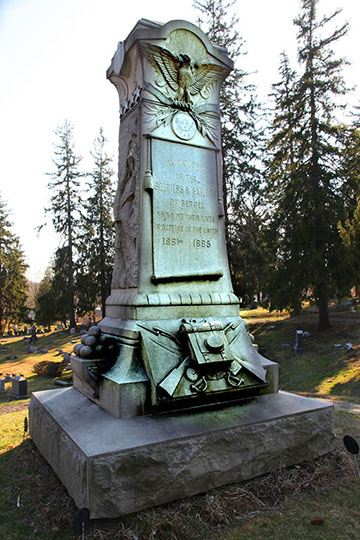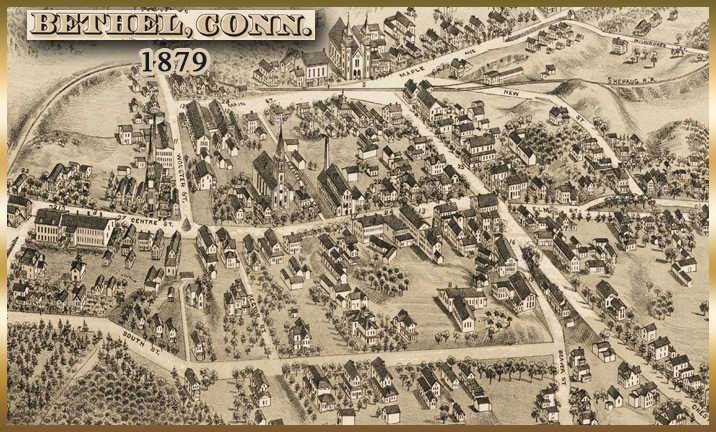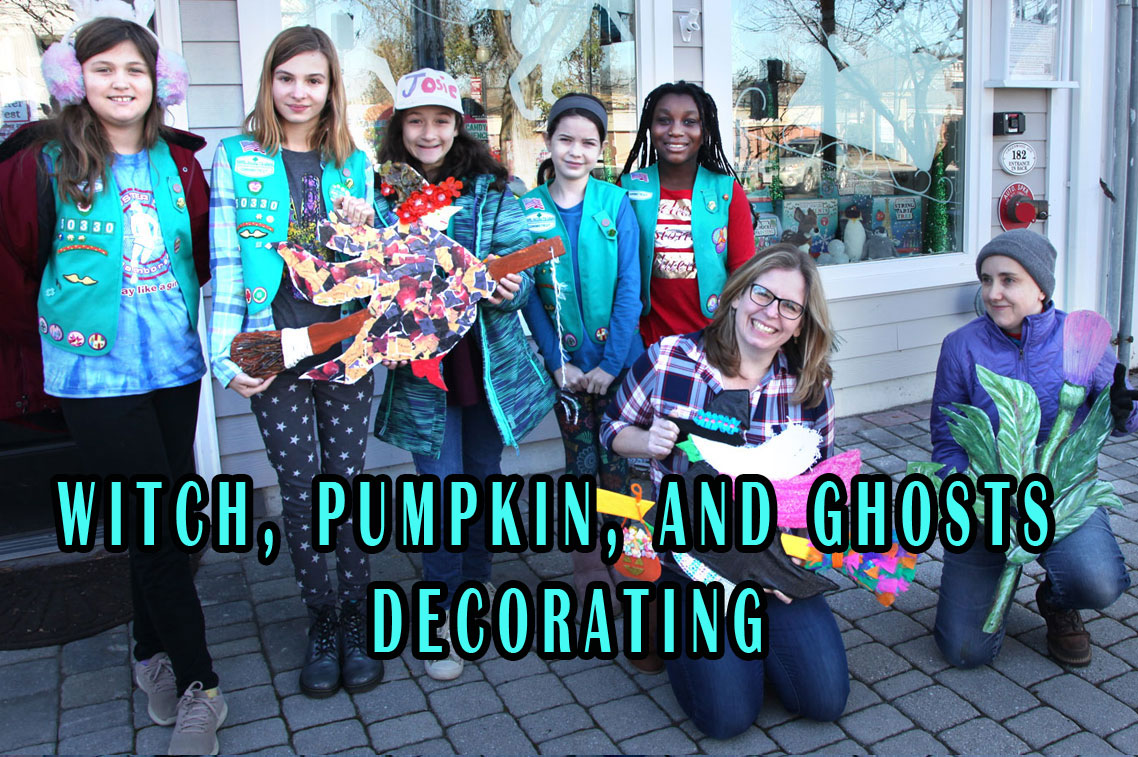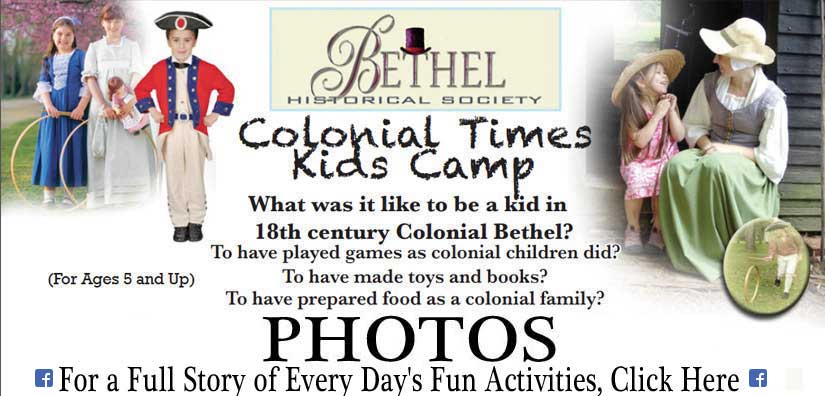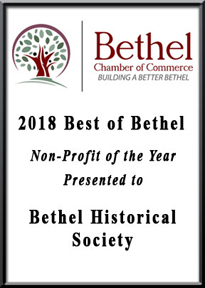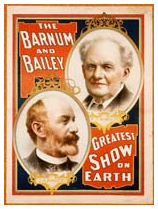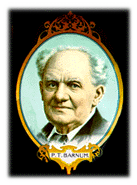WHAT WE DO AS A SOCIETY AND FOR THE TOWN OF BETHEL
Bethel Historical Society
40 Main Street - Bethel, CT 06801
203-743-5893

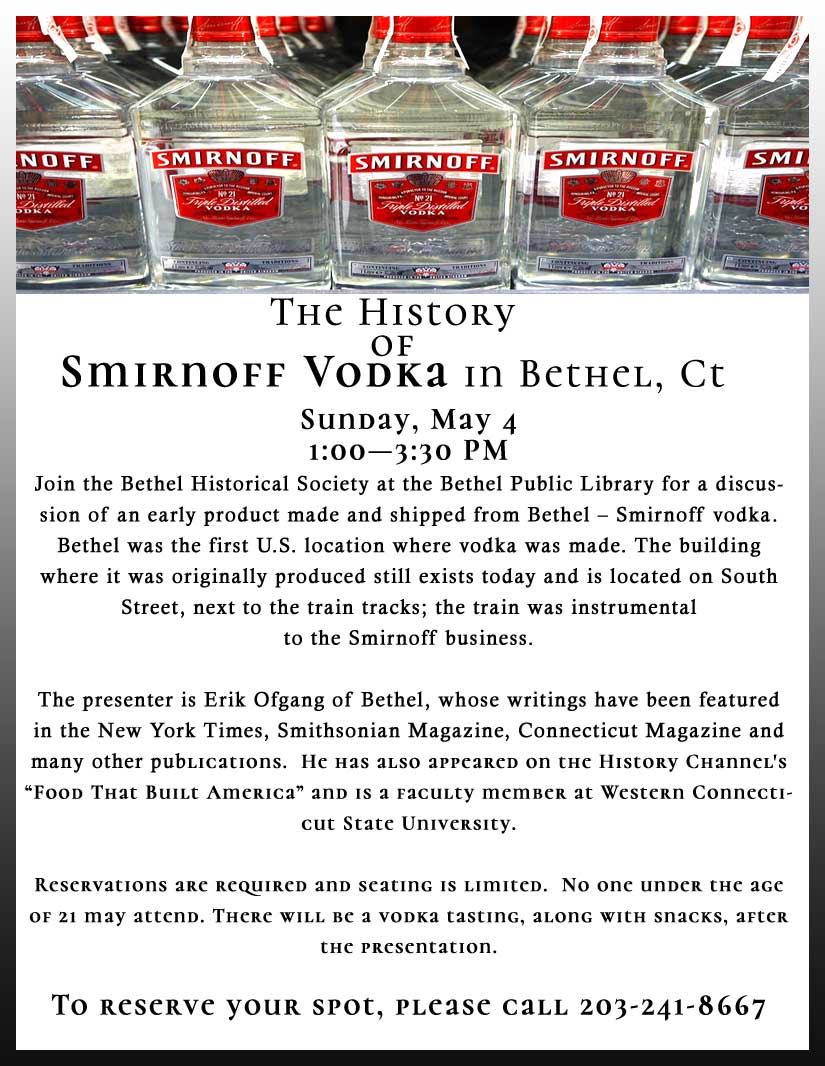
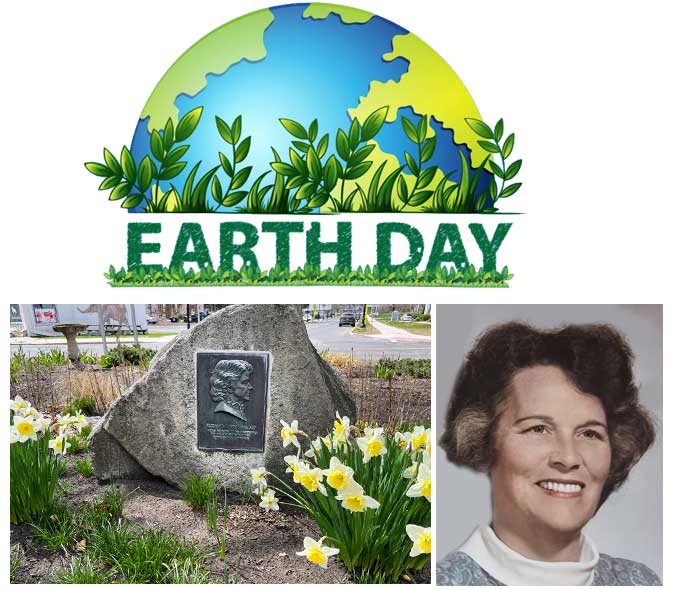
Libby Kellogg’s Environmental Legacy
By Milena Jovanovitch
As Bethel marks Earth Day on April 26, one of the town’s early environmentalists was Elizabeth “Libby” Kellogg, whose legacy continues to be remembered with a memorial on Main Street and a nature preserve near Meckauer park.
“She was 30 years ahead of her time,” a town official told the Bethel Home News in its obituary about Kellogg. She died in 1989 at the age of 69 after an illness.
Flags were flown at half-mast in Bethel when she died and some 300 people attended her memorial service, according to a local news report.
Kellogg marched in parades, carrying signs promoting recycling and educating students and others about its benefits. She became known for collecting cans and papers wherever she went, according to the Bethel Home News.
Kellogg was a charter member of the town's Conservation Commission for many years and is credited with the establishment and success of a recycling center in Danbury. She was active in numerous civic organization, including the Bethel Historical Society, and was also a founder and board member of the Bethel Land Trust,
Kellogg is credited with leading an effort to preserve Bethel’s first town green, a triangular plot of land on Main Street near the intersection of Wooster and School streets and P.T. Barnum Square. This small but significant space was created a few decades after Bethel was constituted a town by the General Assembly in 1855
A bronze plaque bearing her likeness and the inscription, "Elizabeth A. Kellogg - A Woman Dedicated to the Preservation and Enhancement of Our Past, Our Present and Our Future," was embedded in a rock on the grassy traffic island on Main Street. In 2002, the green was redesigned by the Bethel Garden Club with help from the town, volunteers and other residents. Benches, a birdbath and perennial shrubs were added to the area.
The town’s 1958 master plan called for eliminating the green as a traffic hazard to be replaced by a four-way intersection. But no action was taken until town selectmen revived the idea in 1984. Kellogg and other residents mounted a petition drive and forced a referendum in October 1984 that ended the threat. The vote was 947 to 617 in favor of keeping the green, according to the Bethel Home News.
In April 1986, the Planning and Zoning Commission recommended another look at eliminating the green as a potentially hazardous traffic island and simplifying the intersection. The selectmen again called for the elimination of the green and creation of a traffic light. But with no money available for the project, a committee was formed and a series of meetings was held to discuss various proposals. In October 1986, a one-way traffic pattern was put into effect and in 1988 the green was reshaped as part of the work on municipal water mains, according to TownGreens.com
. A peace bell was added to the green in 1999 to honor a Bethel student who won a statewide Earth Day essay competition along with a marker that reads: “Given as a reminder that choices in ecology, economics and ethics be made with future generations in mind.” The green also houses a memorial to Scott “Scotty” Anderson, a Bethel child who lost his life to cancer.
Kellogg’s legacy has also been recognized by the Bethel Land Trust, which named a 19-acre wetland in her honor. The property is located on Shelter Rock Road across from Meckauer Park.
A Republican, Mrs. Kellogg ran unsuccessfully for first selectman in 1985 against then- incumbent Clifford Hurgin in what was described as an unusually friendly campaign. Neither had a bad word to say about the other, and Hurgin even praised her at his swearing in, the Bethel Home News reported.
She was also active in the Senior Center, where she played drums in a musical group.
Kellogg was active in numerous volunteer organizations, founding the Bethel chapter of the American Field Service, and was the recipient of many civic awards, including the Volunteers of America National Award.
She was born in Danbury in 1920 and moved to Bethel after she married Bennett Kellogg in 1940. He died in 1987. Bennett Kellogg, one of the couple’s four children, is a Bethel resident. Krista Swanson Fiorini contributed to this report.

The British Raid on Danbury
by Patrick T. Wild
April 26, 1777
British Troops Encounter Two Riders
on Their March to Danbury
This year marks the two-hundred-and-fiftieth anniversary of the start of the American Revolution. The most significant local event of the war was the British raid on Danbury, which occurred between April 25 and 28, 1777.
British General William Tryon commanded an army of 1500 regular troops that sailed from New York City and was joined by three hundred American Loyalist soldiers of the Prince of Wales Regiment after it landed at Cedar Point (Compo Beach) in Fairfield (now Westport). This formidable force aimed to attack the American supply depot in Danbury and confiscate or destroy the American stores of food, drink, clothes, shoes, stockings, wagons, tents, medicines, weapons, and ammunition. In traveling from Westport to Danbury, the British had two separate and distinct encounters with men on horseback that have sometimes been confused or blended as they were by James Montgomery Bailey in his History of Danbury, Conn. 1684-1896 (p.65). In reality, one incident occurred at the southern end of Sunset Hill Road, just south of the Bethel-Redding border, and the other near the top of Hoyt's Hill in Bethel, and the two events involved quite different circumstances.
The 24-mile route the King's troops took as they moved north closely followed that of today's Black Rock Turnpike (CT Route 58). On their first night, Friday, April 25, they bivouacked near the intersection of Connecticut Route 136 (Cross Highway) and Route 58 (Black Rock Turnpike) in Westport. The following day, Saturday, April 26, the troops were on the move again by 7:45 am. They reached Redding Ridge by 11:00 am and stopped for lunch until 12:30 pm. The site of their brief respite was a large open field that still exists at the northwest corner of Redding's Cross Highway and the Black Rock Turnpike across from what was then the Church of England meeting house and is now the site of the Christ Episcopal Church.
The First Encounter: Lambert Lockwood
(1757-1825)
Only minutes after resuming their march, as the redcoats traveled a half-mile down a gradually descending slope, they unexpectedly encountered a speeding horseman, nineteen-year-old Norwalk native Lambert Lockwood, riding hell-bent for leather directly toward them.
Colonel Joseph Platt Cooke of the 16th Regiment of the Connecticut Militia had sent Lockwood from Danbury to deliver military dispatches to General Gold Selleck Silliman in Fairfield. Cooke sought to inform the general that he had little ammunition and requested his orders. Lockwood agreed to make the daring ride even though he was not then in military service. His recent six-month enlistment in Captain Noble Benedict's Company of Colonel Philip Burr Bradley's Battalion had ended on January 12, 1777.
In 1906, Redding, Connecticut historian Charles Burr Todd provided a detailed account of what happened next. "Shortly before* the army resumed its march, a horseman was observed spurring rapidly down the Couch's Hill road toward them, and approached within musket-shot before discovering their presence; he then turned to fly, but was shot, and severely wounded in the attempt. He proved to be a messenger from Colonel Cook in Danbury, bearing dispatches to General Silliman, by name Lambert Lockwood. Tryon had formerly known him in Norwalk, where Lockwood had rendered him a service, and seems to have acted on this occasion with some approach to magnanimity, as he released him on parole, and allowed him to be taken into a house that his wounds might be dressed."
*(Todd should have said shortly after rather than before.)
This encounter occurred south of the Bethel-Redding border where Sunset Hill Road meets the Black Rock Turnpike today. The turnpike road did not yet continue north beyond this point, and Sunset Hill Road, which was known as Couch's Hill Road before 1906, was then the main road from Fairfield. Given the local topography, Lockwood was undoubtedly riding at breakneck speed down this winding dirt road, which contains a sharp dogleg left turn and then drops dramatically in elevation just before briefly leveling out. By the time he reached the bottom of the hill, he unexpectedly found a wall of adversaries so close that he could not turn his horse around before they opened fire, and a musket ball found its mark.
The validity of this story is supported by legal depositions of Lockwood's fellow soldiers submitted by his widow, Elizabeth when she applied for a military pension in 1840. Lockwood died at 68 in Bridgeport, Connecticut, of "quick consumption," now known as acute tuberculosis, on February 11, 1825.
The Second Encounter: Luther Holcomb
(1752-1839)
After traveling a little over a half mile beyond where they had encountered Lockwood, the British were startled by the sudden appearance of a second horseman, twenty-four-year-old Luther Holcomb. In 1836, John Warner Barber, in his Historical Collections of Connecticut, provided this anecdote when discussing the village of Bethel.
"The British troops, in their expedition to Danbury, passed through this village; the following incident is said to have occurred here at that time. As the British were descending* the hill, a short distance from the village, on the old Reading road, one of the inhabitants of the town, Mr. Luther Holcomb, rode his horse up to the summit of an eminence in front of the enemy. Although entirely alone, Mr. Holcomb, (judging by the words he used,) evidently intended to make an impression. Waving his hat or sword, and turning his face as though he was addressing an army behind him, he exclaimed in a voice of thunder "Halt the whole universe! Break off by kingdoms!" This, it must be confessed, was a formidable force to encounter. The British army came to a halt, their cannon brought forward and made to bear upon their supposed opponents, and flanking parties sent out to make discoveries. Mr. Holcomb, on the point of being surrounded, and deeming "discretion the better part of valor," thought it advisable to make good his retreat in a rapid manner towards Danbury."
*Barber should have said "ascending" rather than "descending."
On April 27, 1854, in an oration delivered at the dedication of the General David Wooster Monument in Danbury, Henry C. Deming retold the story related by Barber eighteen years before and identified its setting as Hoyt's Hill. According to Holcomb's own account, he was enlisted in Captain David Wood's Company of Colonel John Lamb's Regiment at the time of the British raid, working as an artificer (skilled worker) making wagons in Danbury. His non-combatant status suggests Holcomb chose to undertake this bold and reckless act alone and was not ordered to do so. His purpose seems to have been to aggravate and slow the enemy on their way to raid Danbury and to give additional time to those who sought to evacuate.
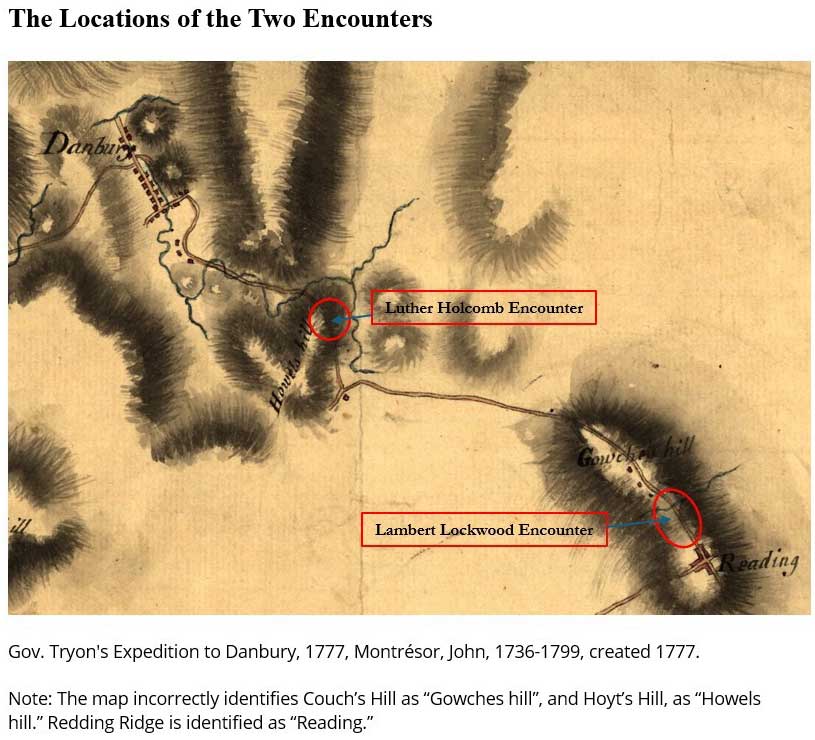
Holcomb and his family left Bethel in 1795 and moved to Winchester, Connecticut. In 1805, the Holcomb family moved again, this time to Coventry in Chenango County, New York. Luther Holcomb died at 87 on June 22, 1839, and is buried in North Afton, New York.
Lambert Lockwood's death was announced in the Connecticut Courant on February 22, 1825. Source: Newspapers.com


The signature of Luther Holcomb as it appeared on a military pension application filed on March 19, 1834, when he was eighty-one. Source: National Archives, U.S., Revolutionary War Pensions, 1800-1900
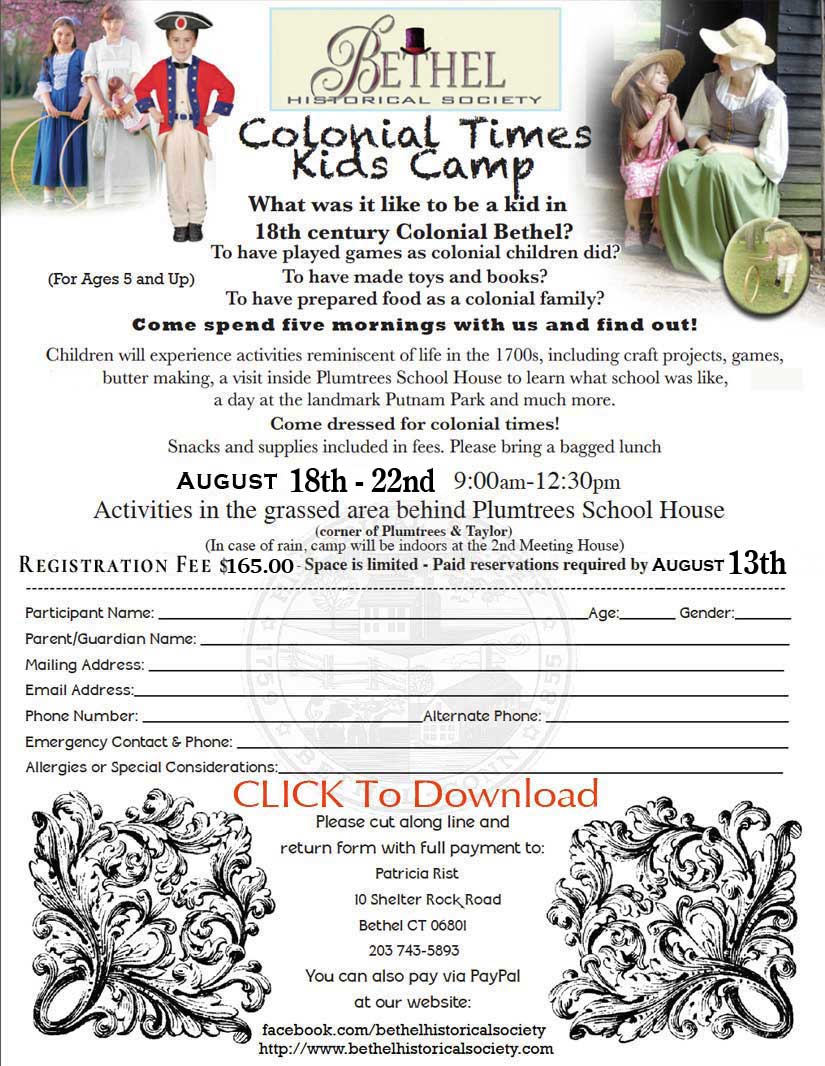
The Worst Blizzard in the History of Bethel
By Jack Drake, Meteorologist
One of the most frequently asked questions I receive is, “What do you think was the worst snowstorm of all time?” The Blizzard of 1888, which lasted for the better part of three days from March 11 to March 14, is also known as the “Great White Hurricane.”
WILTON 1888

DANBURY 1888

It is one of the most infamous blizzards in United States history and certainly the “grandaddy” of all Connecticut winter storms. The state was particularly hard-hit during this event, and the legends of this storm have been passed down through generations. The following stories are based on quotes from people who lived through the storm, archived press headlines from the era, and meteorological reanalysis of the event.
Based on primary and secondary sources, I estimate the snow totals from this storm to be roughly 30-36 inches throughout Western Connecticut. This is remarkable in its own right, but the heavy snow was accompanied by hurricane force wind gusts of up to 75 mph, near-zero visibility, and wind chills below zero. Widespread drifts of 15-25 feet were reported.
As you will read in the following stories, it becomes clear this storm had a tremendous impact on the residents at the time. Striking with little warning, the blizzard was also responsible for approximately 400 fatalities across the region, making it both an incredible and incredibly tragic event. To this day, the Great Blizzard of 1888 remains largely unmatched in terms of snow, wind, and overall impact in New England.
The first story comes from Redding, which was particularly hard-hit. Helen Upson of Redding, interviewed in 1960 about the storm that took place during her childhood, remembers, “After the storm, drifts reaching second-story windows were frequent. In orchards, just the tips of the upper branches of the apple trees protruded from these small mountains of snow. The telegraph service was crippled, as everywhere, wires were down. There were no telephones in those days.”
Similarly, Howard Peck of New Milford wrote, “By mid-afternoon that day, foot travel was almost impossible due to the depth of snow, huge drifts, and winds of great velocity. An indication of the height of the drifts on Bank Street is that after the storm had subsided and the cleanup had been undertaken, the shovelers tunneled through the drifts to open the sidewalks.”
In the days of horses and buggies, local train service was essential to the movement of people and goods through Western Connecticut communities. In Ridgefield, the local train got stuck at the Branchville station in enormous drifts of snow, essentially cutting off Ridgefield from the outside world for an entire week before the roads and the tracks were clear. It had to be shoveled out by hand. The Ridgefield Press headline after the storm read, “A Howling Blizzard! The Storm Rages Furiously for Two Days! Cities and Towns Paralyzed! Ridgefield Shut Off from Outer World for Nearly a Week! Traffic on All Roads at a Standstill!”
It is also important to remember many of the towns around Danbury were rural farming communities in 1888. Raising livestock was a way of life. This story gives perspective to not only how deep the snow was, but also some of the suffering the storm caused. On one local farm, a large flock of sheep was buried under the snow. The living animals were located by breathing holes on the surface. Many of the flock were dead, but several had survived by eating wool from the backs of their dead companions. In fact, all over town, such animals as sheep, pigs, and goats, buried under the snow, were located by surface breathing holes. This resulted in "hibernating" domestic animals of the above types, with turkeys, chickens, geese, and even a few calves, being dragged into house cellars to thaw out.
Although March temperatures were warm shortly after the storm, snow melted very slowly that year in the shadows of overhanging cliffs and sheltered ravines of our local towns. Stories from Bethel, Redding, Newtown and Monroe all mention snow piles lasting from late May through June and even into early July.
I often joke that you know a storm was truly intense when no one today is alive to remember the Blizzard of 1888, but everyone still considers it the worst storm to ever hit. It is important to know your local weather history and just how bad conditions can get. If it happened before, it is only a matter of time until it happens again.
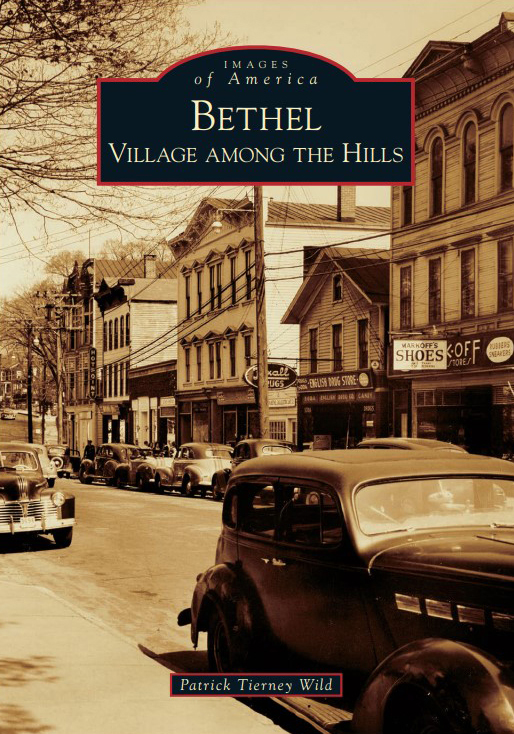
Bethel's recorded history stretches back to its earliest settlement as part of Danbury in 1684.
Click for More Info!
- Photo: Robert Sauber-Bethel Historical Society
- Photo: Robert Sauber-Bethel Historical Society
- Photo: Robert Sauber-Bethel Historical Society
- Photo: Robert Sauber-Bethel Historical Society
- Photo: Robert Sauber-Bethel Historical Society
- Photo: Robert Sauber-Bethel Historical Society
- Photo: Robert Sauber-Bethel Historical Society
- Photo: Robert Sauber-Bethel Historical Society
- Photos Valerie Franco
- Photos Valerie Franco
- Photos Valerie Franco
- Photo: Robert Sauber-Bethel Historical Society
- Photo: Robert Sauber-Bethel Historical Society
- Photo: Robert Sauber-Bethel Historical Society
- Photo: Robert Sauber-Bethel Historical Society
- Photo: H John Voorhees III - Hearst Connecticut Media - NEWS TIMES
- Photo: H John Voorhees III - Hearst Connecticut Media - NEWS TIMES
- Photo: H John Voorhees III - Hearst Connecticut Media - NEWS TIMES
- Photo: Robert Sauber-Bethel Historical Society
- Photo: Robert Sauber-Bethel Historical Society
- Photo: Robert Sauber-Bethel Historical Society
 Pictures from Party
Pictures from PartyGrant Received
The Bethel Historical Society wishes to thank the Elizabeth Raymond Ambler Trust for their recent generous gift of $4,600 to the Bethel Historical Society.
Their donation will be used to complete our website section of our Museum in the Streets, highlighting about 30 historic Bethel locations.
We invite you to view our website at bethelhistoricalsociety.com to take a tour through the sites that are the first group to be installed in downtown Bethel. We are very proud of the work the Historical Society Directors have completed to date. Stop back and view the site again as it will continue to grow over the next several months.
The Bethel Historical Society is grateful for the support the Trust has shown us.

